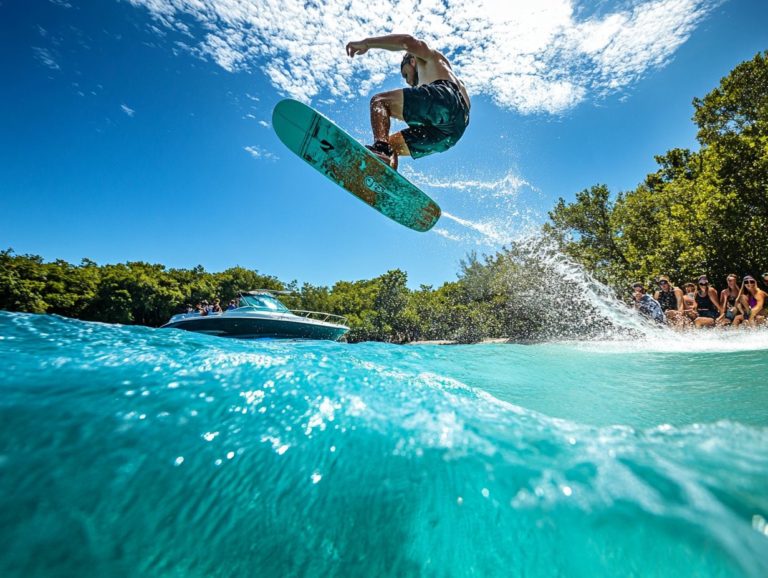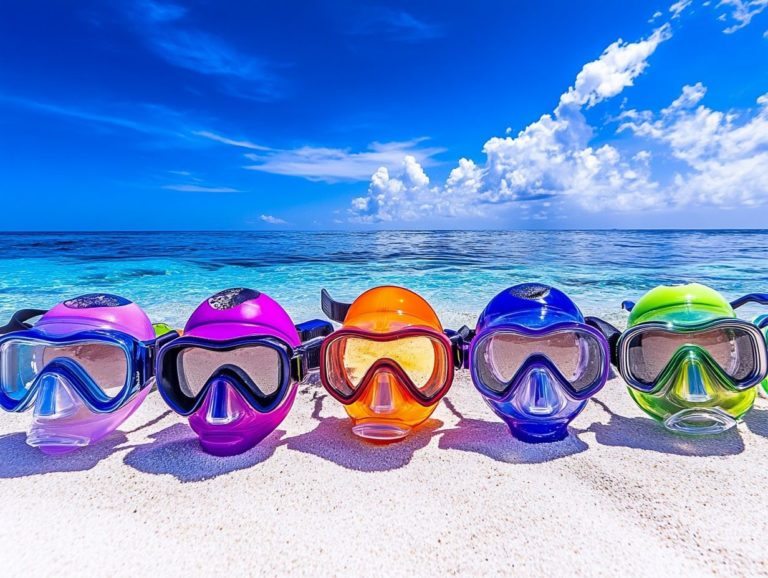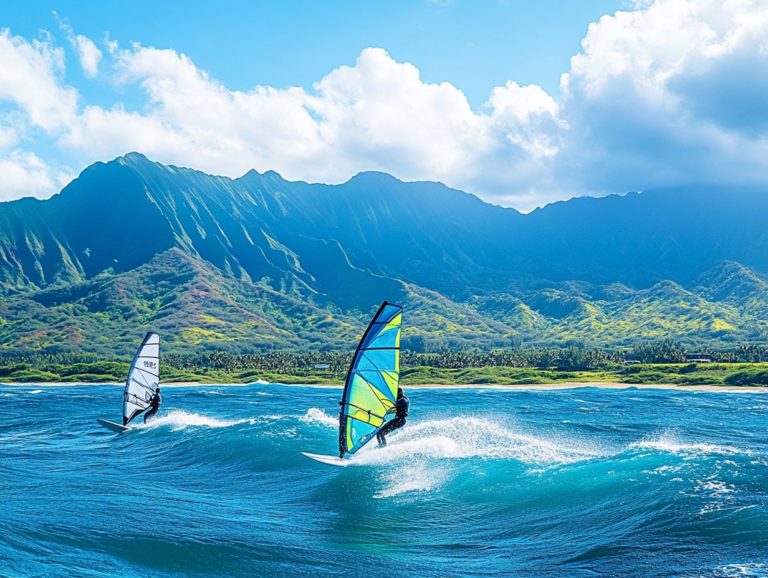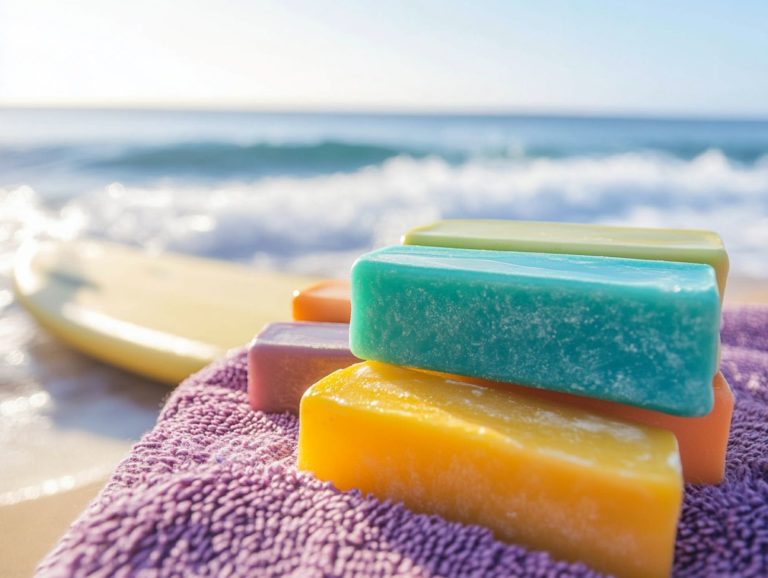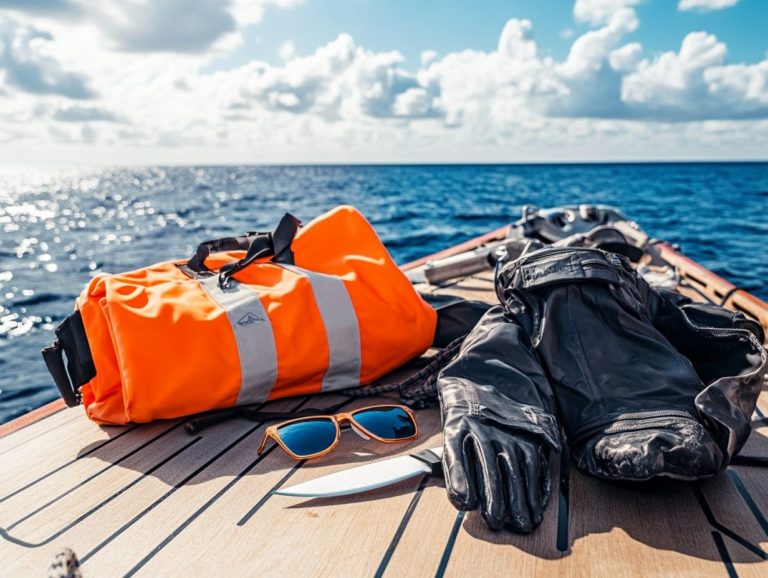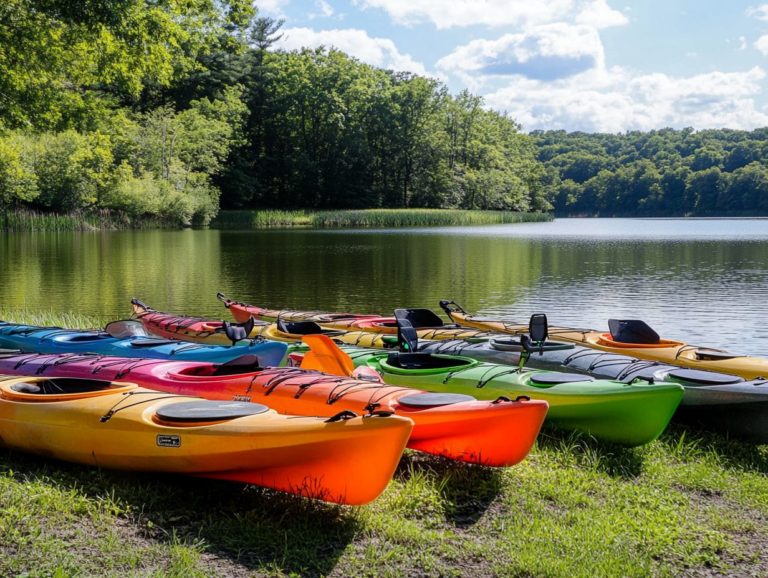5 Tips for Maintaining Your Water Sports Gear
Reliable gear is crucial for enjoying water sports. It ensures both performance and safety.
This article provides five essential tips to maintain your water sports equipment. You’ll learn common mistakes to avoid and useful maintenance tools.
Dive in to uncover how simple practices can create a significant impact!
Contents
- Key Takeaways:
- 1. Rinse Your Gear After Use
- 2. Dry Your Gear Thoroughly
- 3. Store Your Gear Properly
- 4. Regularly Check for Wear and Tear
- 5. Perform Routine Maintenance
- Why Is It Important to Take Care of Your Water Sports Gear?
- Frequently Asked Questions
- What are the 5 tips for maintaining your water sports gear?
- Why is it important to regularly rinse and dry your water sports gear?
- How often should I check for damage or wear on my water sports gear?
- What is the best way to store my water sports gear?
- Do I need to use protective covers for my water sports gear?
- How often should I perform routine maintenance on my water sports gear?
Key Takeaways:
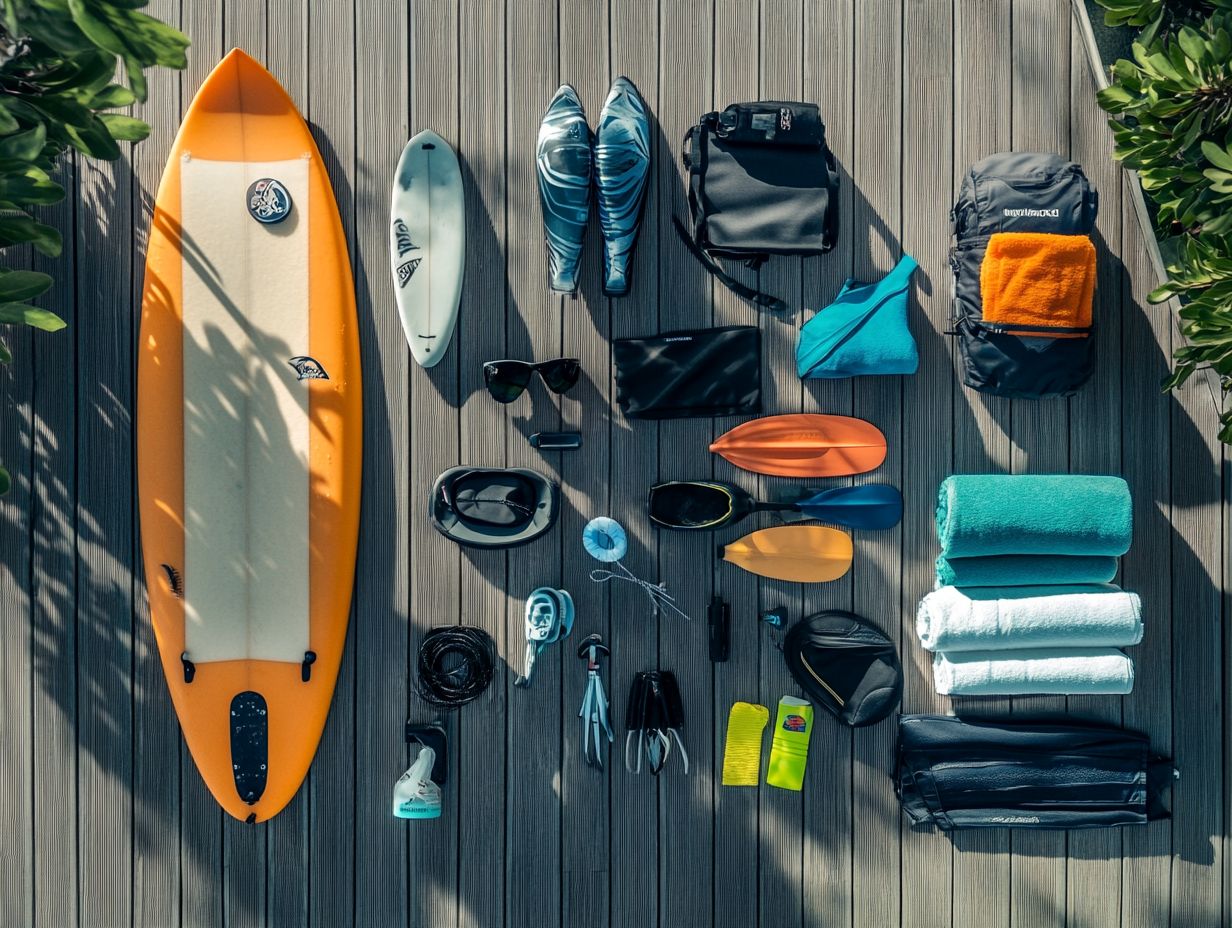
- Always rinse your water sports gear after use to remove salt and debris that can cause damage.
- Thoroughly dry your gear before storing to prevent mold and mildew growth.
- Properly store your gear in a cool and dry place to prevent damage from sunlight and extreme temperatures.
1. Rinse Your Gear After Use
Rinsing your water sports gear after each use is an essential maintenance step that safeguards your equipment from the harsh effects of salt, sand, and other contaminants. This simple act enhances the longevity of your gear and ensures safe performance in activities like kayaking, paddle boarding, and canoeing. For more information on keeping your gear safe, check out what to know about water sports safety gear.
By dedicating just a few minutes to thoroughly rinse your equipment with fresh water, you significantly reduce the risk of metal damage caused by moisture and wear from those relentless elements.
For your kayak, don t forget to clean both the exterior and interior meticulously, using a soft sponge to prevent scratches.
Make sure to rinse every area of your paddle board, including the fins and foot pads, to keep them free from sand and debris.
For your life jackets and other accessories, immerse them in a bucket of fresh water, give them a gentle scrub, and then let them air dry. This straightforward practice will go a long way in extending the lifespan of your cherished gear while maintaining its peak performance.
2. Dry Your Gear Thoroughly
Thoroughly drying your gear after rinsing is crucial to preventing mold and mildew. These can compromise the integrity of your equipment and diminish your water sports experience.
To accomplish this effectively, use absorbent towels to pat down hard-to-reach areas, ensuring every inch is moisture-free. Air drying in a shaded, well-ventilated space is equally important; sunlight can degrade materials, so opting for a cool spot protects your gear from UV damage.
Proper storage is another key factor. Utilizing breathable bags instead of plastic containers allows for essential air circulation, preventing dampness and potential odors. Regularly inspecting and maintaining your gear ensures its reliability and safety for all your future adventures.
3. Store Your Gear Properly
Proper storage of your water sports gear is essential for maintaining its condition and performance. This allows your kayaking, paddle boarding, or canoeing adventures to remain safe and enjoyable while reducing the risk of equipment damage.
Store your gear in a cool, dry environment; excessive heat and moisture can lead to deterioration. Utilizing protective covers designed specifically for each type of equipment shields them from harmful UV rays while preventing scratches and abrasions.
Regular inspections during storage are crucial. By checking for signs of wear, fraying, or mold, you can identify potential issues before they escalate into bigger problems. Elevating your items off the ground and ensuring proper ventilation will further enhance their longevity.
Taking these simple steps will keep your equipment in top shape. Don t miss out on the adventures waiting for you!
4. Regularly Check for Wear and Tear
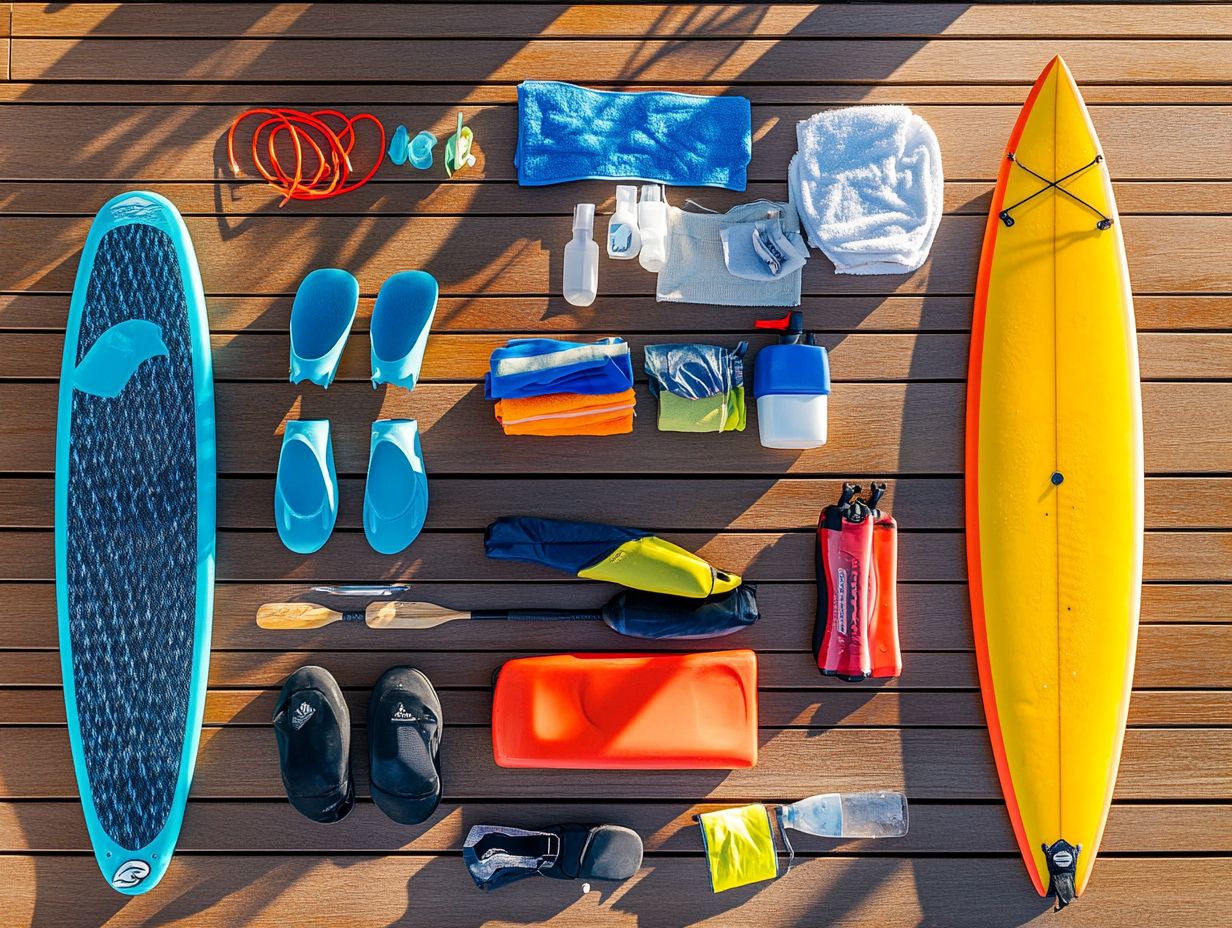
Check your water sports gear regularly to prevent injuries and follow safety rules. This keeps you safe while having fun.
This way, your gear lasts longer and keeps you safer on the water. Start with a visual inspection of your equipment. Pay close attention to areas like the hull, which is the bottom part of your boat, for signs of cracks or abrasions.
It’s also important to examine life jackets for any wear and tear. Make sure that buckles, straps, and flotation materials are intact and fully functional.
Check that all attachments and fasteners are securely in place. Catching potential issues early can prevent minor flaws from turning into serious accidents. This ensures a safer and more enjoyable adventure on the water.
5. Perform Routine Maintenance
Performing routine maintenance on your water sports equipment is crucial for optimal performance and longevity. This allows you to fully enjoy outdoor activities like kayaking, paddle boarding, and recreational boating.
Establishing a maintenance routine enhances the safety and efficiency of your gear. It also helps you spot potential issues before they become serious problems. Regularly lubricating moving parts prevents wear and tear, while checking for leaks keeps your equipment watertight.
Don’t forget to inspect safety gear like life jackets and paddles for any signs of damage. This can make a world of difference in ensuring a safe outing.
By following these maintenance tips, you can cut down the risk of equipment failure and enjoy many more delightful days on the water!
Why Is It Important to Take Care of Your Water Sports Gear?
Caring for your water sports gear is essential for your personal safety during aquatic adventures. It also minimizes your environmental footprint.
Regularly inspecting and maintaining your equipment lowers the risk of malfunctions that could lead to injuries or accidents. Proper gear care promotes safety, ensuring each outing is both enjoyable and secure.
Taking the time to maintain your gear reduces the chances of it becoming a hazard to the environment. This helps promote a cleaner and healthier aquatic ecosystem.
When you prioritize gear upkeep, you help protect marine habitats that are vital for biodiversity.
What Are the Common Mistakes People Make When Caring for Their Gear?
Common mistakes in caring for your water sports gear can significantly increase the risks of accidents. This puts both your safety and enjoyment at stake.
Many enthusiasts often overlook routine maintenance checks, which are vital for ensuring that everything from life jackets to kayaks is in optimal working condition. Neglecting these checks can lead to worn-out components that are more prone to failure.
Using harsh chemicals or failing to rinse off saltwater during cleaning can degrade materials over time. Inadequate storage practices, such as leaving gear exposed to the elements, can also lead to considerable wear and tear. To ensure your equipment lasts, it’s important to learn how to maintain your outdoor gear for longevity.
To avoid these issues, establish a regular maintenance schedule. Use mild cleaners for washing your gear, and store it in a dry, protected area. For tips on storage, check out this guide on how to organize your water sports equipment. This proactive approach can greatly enhance the longevity and safety of your equipment, allowing you to enjoy your outdoor adventures with peace of mind.
What Are the Essential Tools for Maintaining Water Sports Gear?
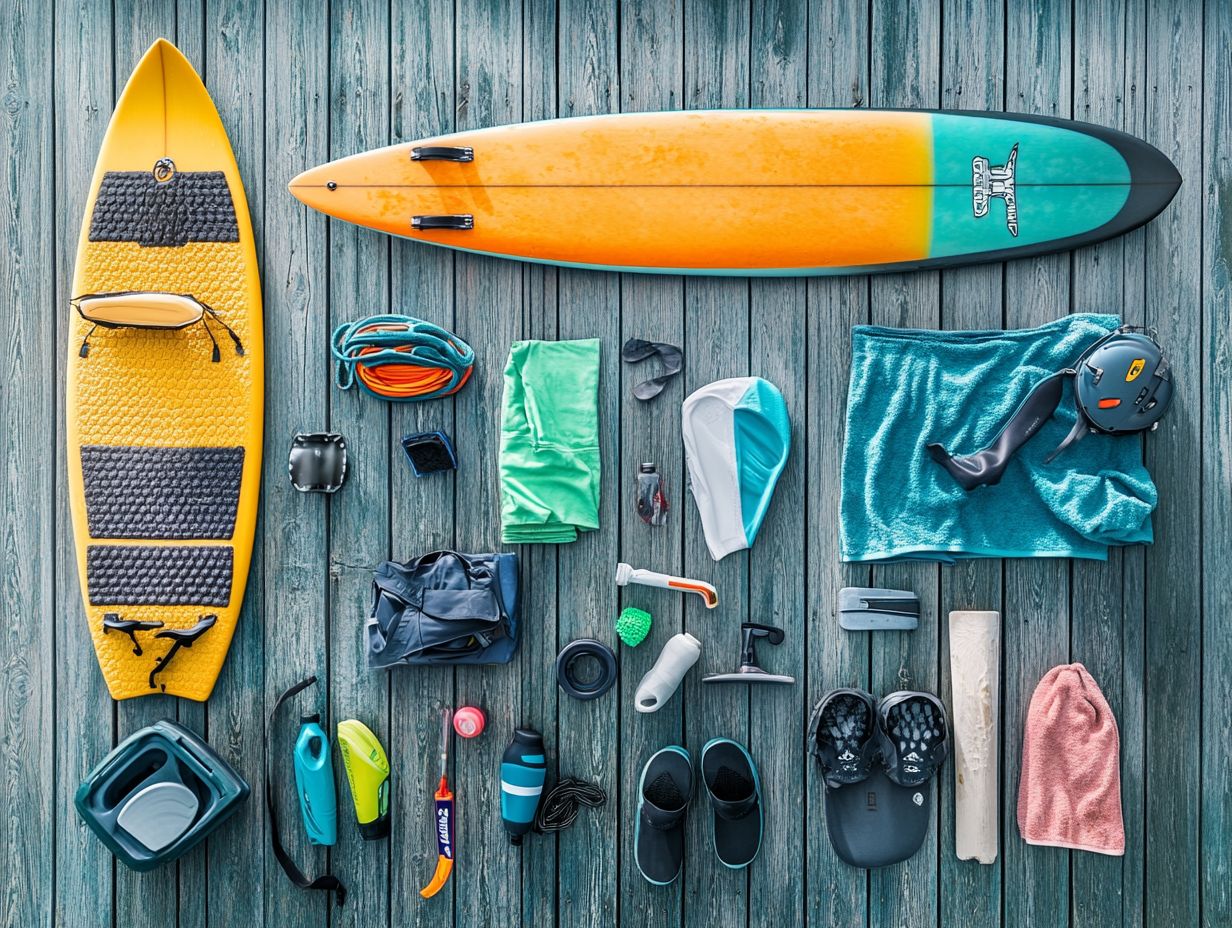
Having the right tools to maintain your water sports gear is essential for ensuring effective care and preservation. This ensures that your equipment remains safe and reliable during every aquatic adventure.
You ll want a comprehensive selection of supplies and tools tailored to meet various needs. This significantly enhances the longevity of your gear. For example, specialized cleaning solutions can effortlessly remove salt and grime. Brushes and cloths make thorough cleaning of surfaces and materials a breeze.
Inspection tools, like multi-use wrenches which can tighten or loosen various types of nuts and bolts and pressure gauges, are invaluable for identifying wear and tear. This ensures that everything operates at peak performance.
Don t overlook protective gear, such as bags and cases, which provide necessary shielding from environmental elements. Together, these tools create a holistic maintenance approach that keeps you prepared and your gear in prime condition, ready for any recreational boating adventures.
How Often Should Gear Be Replaced?
Understanding when to replace your water sports gear is crucial for upholding both safety and performance standards, particularly with safety equipment like life jackets and personal protective gear.
Several factors come into play when deciding to replace your gear, including the extent of wear and tear, frequency of use, and the manufacturer’s specific recommendations. Regular inspections can reveal signs of damage or degradation, prompting you to act swiftly. For example, check your life jackets annually and replace them every five years to stay safe and enjoy your adventures fully!
Wetsuits, on the other hand, typically last around three to five seasons, especially after being consistently used in harsh conditions. Your paddleboards and kayaks might need replacing every few years if they show excessive scratches or structural weakening. Taking action now keeps you safe and boosts your fun on the water!
What Are Some Ways to Extend the Lifespan of Your Gear?
Extending the lifespan of your water sports gear is entirely within your reach. A blend of effective maintenance practices and mindful usage lets you dive into your favorite activities without worrying about replacements.
Start by establishing a regular cleaning routine. Rinsing off saltwater or chlorine after each use is crucial to prevent corrosion and mold from taking hold. For more detailed guidance, check out how to care for your water sports equipment. Allowing your gear to dry completely before storage is another vital step. This significantly reduces dampness that can lead to unwanted mildew.
In terms of storage, choose a cool, dry place away from direct sunlight. This simple act protects your materials from harmful UV damage. Investing in protective cases or covers can further enhance your gear’s defense against environmental factors.
Consider carrying a waterproof bag for transport; it’s a savvy investment that shields your gear from unexpected weather changes. This way, you ll always be ready for a paddle or a splash, no matter what Mother Nature throws your way.
What Are Some Tips for Cleaning Specific Types of Water Sports Gear?
Cleaning specific types of water sports gear like kayaks, paddleboards, and canoes requires a tailored approach to ensure effective maintenance and safeguard against environmental damage.
Using the right cleaning equipment can significantly enhance the longevity and performance of your gear. For example, kayaks often accumulate dirt and debris. Employing a mild soap solution with a soft sponge helps remove grime without risking any unsightly abrasions.
Paddleboards, frequently exposed to sunlight and saltwater, benefit from UV-protectant cleaners that prevent fading and degradation. Regular maintenance, guided by best practices for water sports equipment care, makes your gear look better and plays a crucial role in ensuring safety. Dirt or algae buildup can lead to slips or instability while you’re out on the water, impacting your personal well-being.
A consistent cleaning schedule is essential for everyone who enjoys water sports, especially for ensuring injury prevention.
Frequently Asked Questions
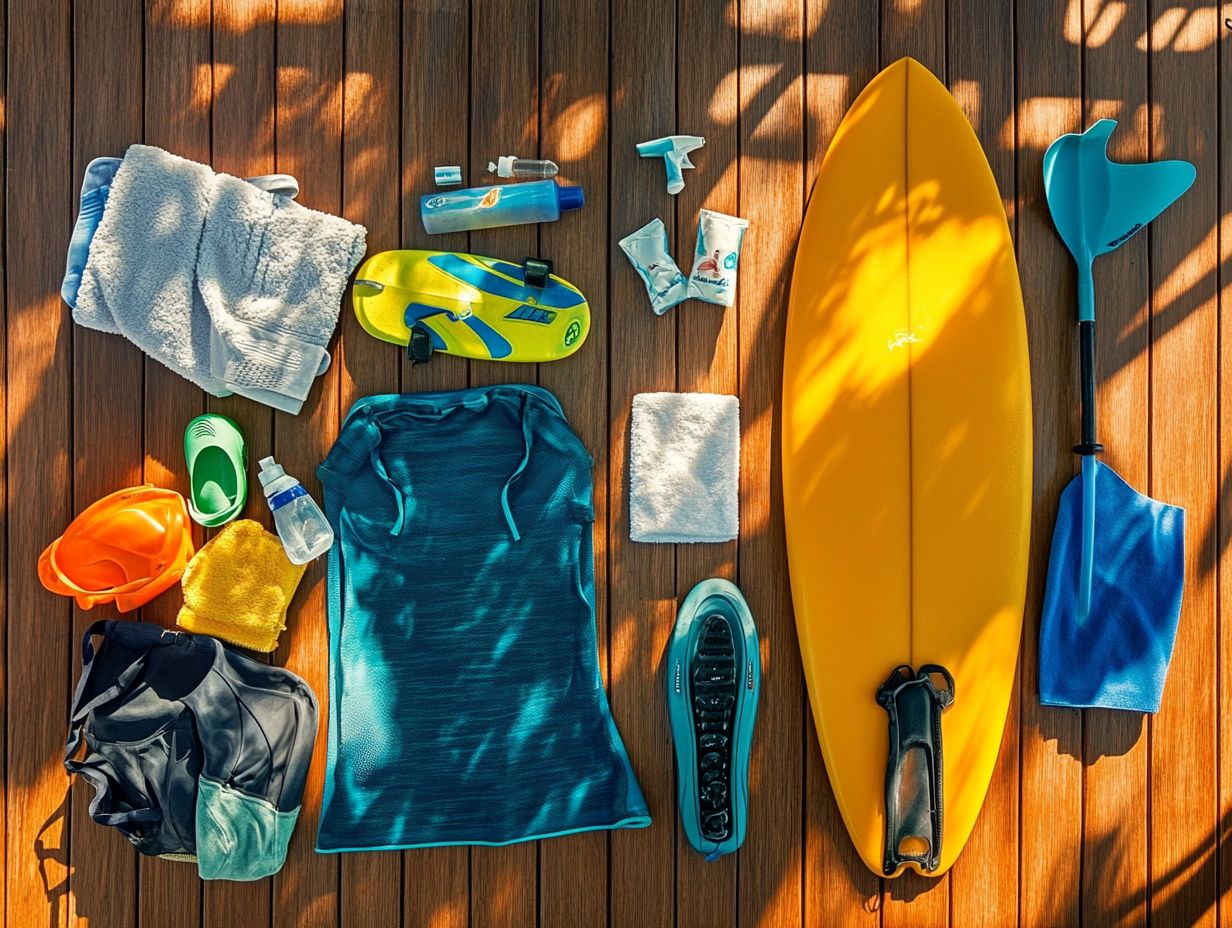
What are the 5 tips for maintaining your water sports gear?
- Regularly rinse and dry your equipment.
- Check for any equipment damage or wear.
- Store it properly by following proper storage guidelines.
- Use protective covers.
- Perform routine maintenance.
Why is it important to regularly rinse and dry your water sports gear?
Regularly rinsing and drying your water sports gear removes any salt, chlorine, or bacteria that can cause damage or corrosion over time. It also helps prevent mold and mildew from growing on your equipment.
How often should I check for damage or wear on my water sports gear?
Check for damage or wear on your water sports gear before and after each use as part of your maintenance checks. This will help catch any issues early and avoid bigger problems later.
What is the best way to store my water sports gear?
The best way to store your water sports gear is in a cool, dry place away from direct sunlight. Avoid damp or humid environments, as this can lead to mold and mildew growth. It s also important to store your gear off the ground to prevent any potential damage.
Do I need to use protective covers for my water sports gear?
Protective covers are a game-changer! They keep your gear safe from the elements, preventing scratches or dings, and offering boating regulations compliance. This is especially important for larger equipment, such as kayaks or paddleboards, that may be stored outside.
How often should I perform routine maintenance on my water sports gear?
Routine maintenance should be performed on your water sports gear at least once a year, or more frequently if you use it often or in harsh conditions. This includes tasks such as lubricating moving parts, replacing worn-out components, and checking for any potential issues.
Don’t wait until it’s too late! Start caring for your gear today!

